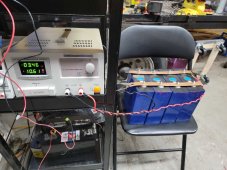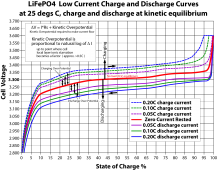lupo
New Member
just to prove that there will be current flowing if the voltage is different:
yup, I encountered exactly this yesterday. I found this page https://diysolarforum.com/ewr-carta/topbalancelfp/ which describes the passive/mid balancing for new cells that are matched. I trusted the page and tried this approach yesterday (I also published a video about it (see link in the signature)) with new cells that were in range of <10mV difference. I ended up with the BMS disconnecting while charging due to one cell reaching 3.7V. The others were at around 3.31, so the pack was definitely not fully charged. My guess is that the SoC was different and not matched, but I am still verifying.
@2Big2B - maybe we can simplify it. I also performed a test you may be interested in.
If you get your nearly half-discharged cells freshly shipped out of the box, and put them together in parallel, you'll be "mid-balanced" after the small amount of current flows between each cell. But as we know, in the flat part of the curve, this means nothing. From a voltage standpoint, one cell could be at 80% capacity, and another at 30% despite the voltages appearing to be the same when you take them apart and measure again! (unless you have lab equipment)
Practically - mid balanced by paralleling means nearly nothing useful in the real world.
yup, I encountered exactly this yesterday. I found this page https://diysolarforum.com/ewr-carta/topbalancelfp/ which describes the passive/mid balancing for new cells that are matched. I trusted the page and tried this approach yesterday (I also published a video about it (see link in the signature)) with new cells that were in range of <10mV difference. I ended up with the BMS disconnecting while charging due to one cell reaching 3.7V. The others were at around 3.31, so the pack was definitely not fully charged. My guess is that the SoC was different and not matched, but I am still verifying.
Last edited:






